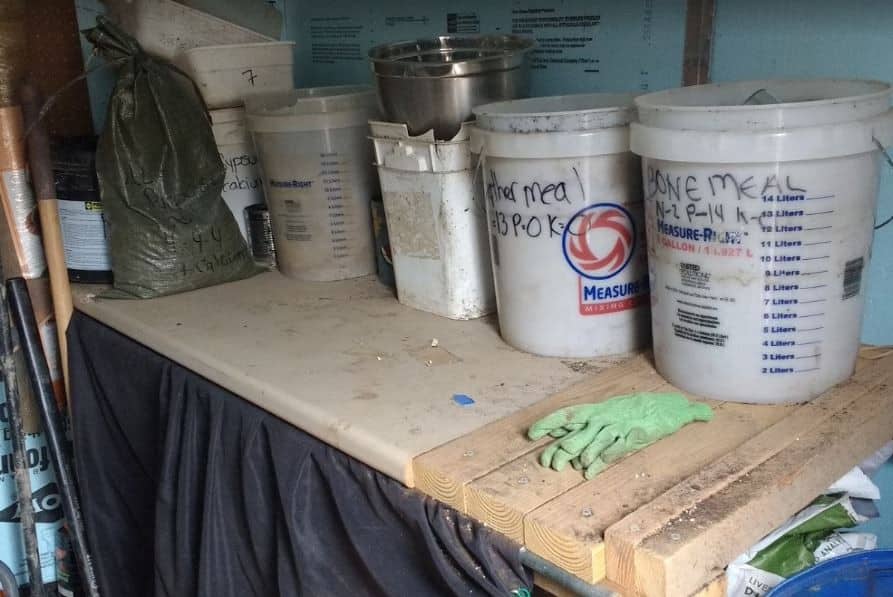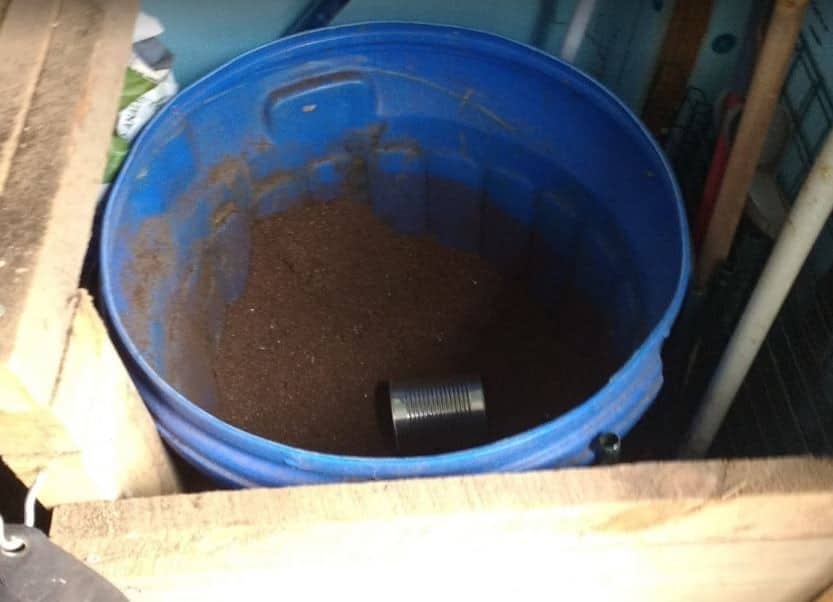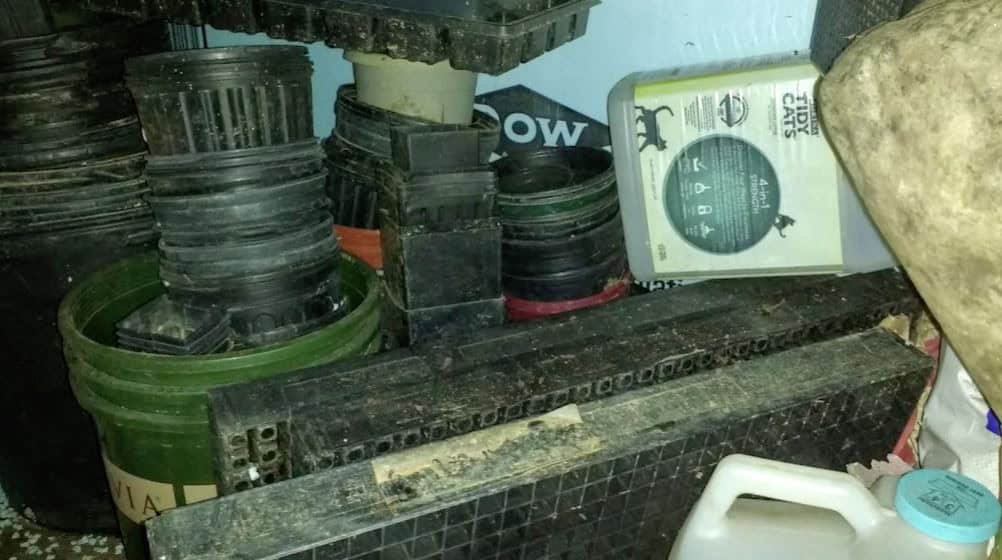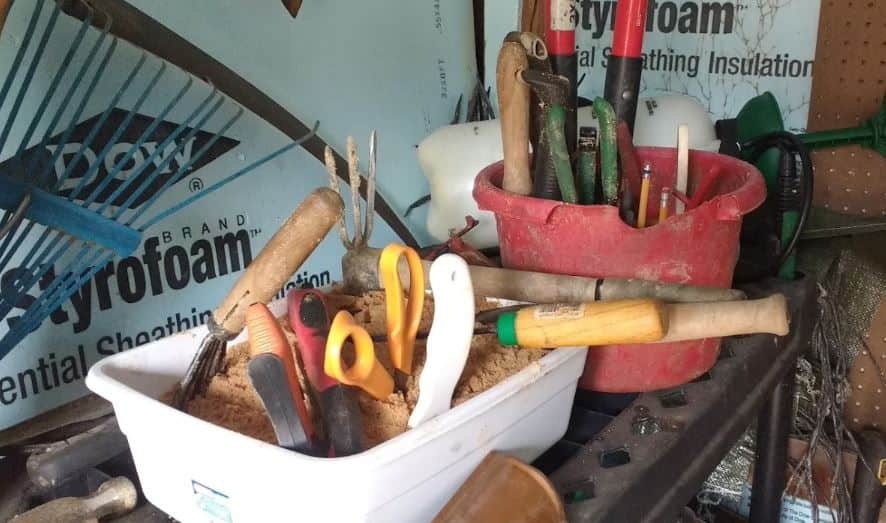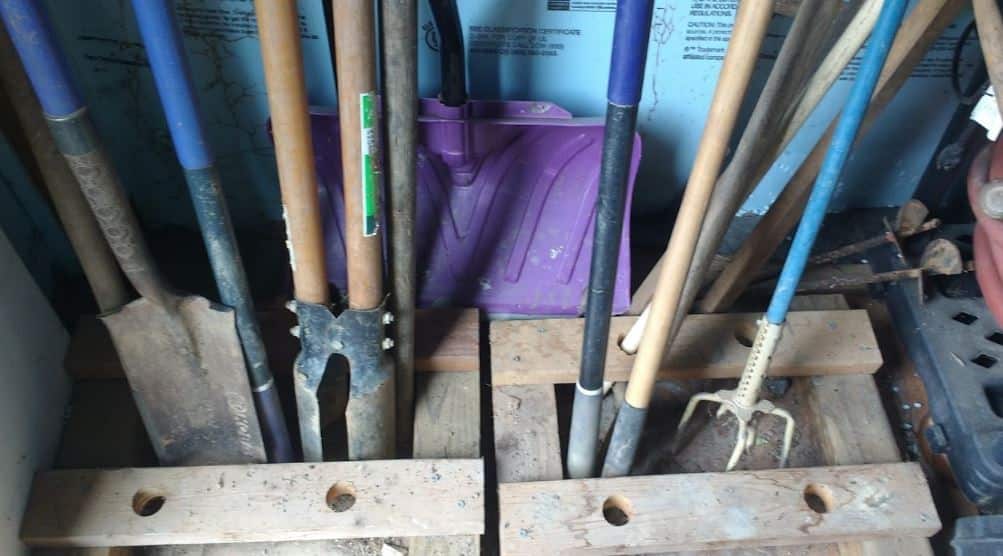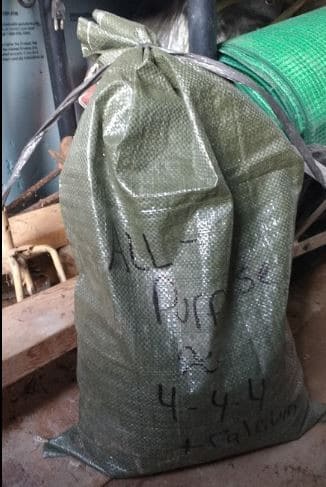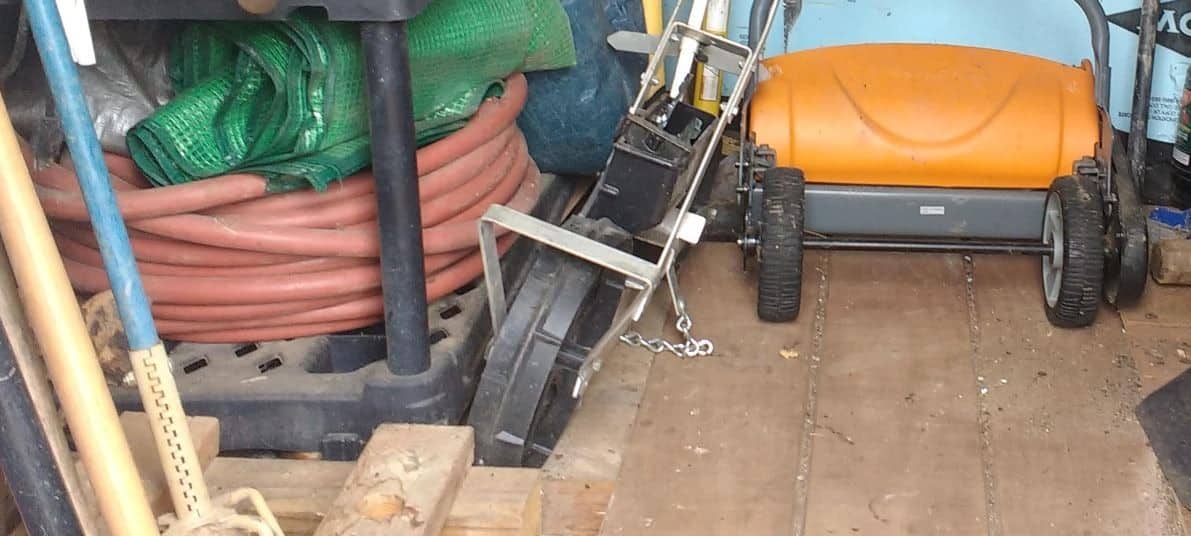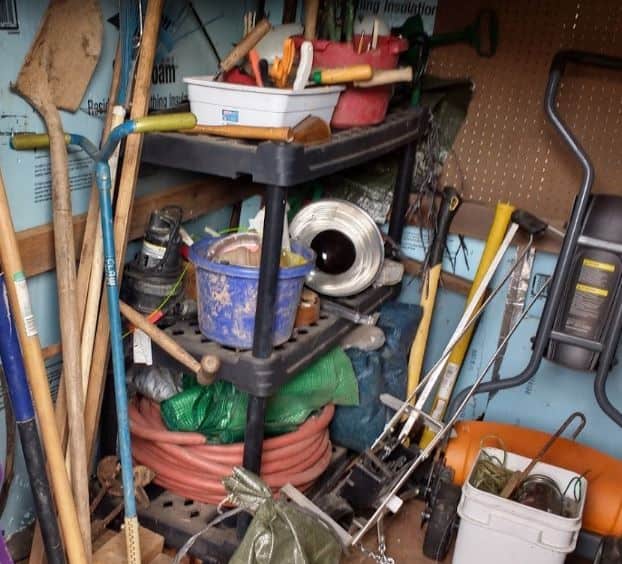For years, I dreamed of having a potting shed as a symbol of gardening excellence. But looking back, I realize that view was overly simplistic. You can still be a skilled gardener even if you don’t have a dedicated space for tools or supplies. That being said, having a potting shed does make storing and organizing your garden materials much easier. It’s also an ideal location to perform messy tasks that would otherwise disturb your home’s interior.
The shed offers protection from the elements, allowing you to start preparing for the gardening season even when weather conditions aren’t ideal. If you’re considering building or optimizing a potting shed, or already have one and want to maximize its functionality, keep reading for practical tips on what to store in your shed and creative storage ideas.
What is a Potting Shed?
For those unfamiliar with gardening jargon, the term ‘potting shed’ might seem like a foreign concept. But, to clarify, it’s not just any ordinary shed that serves as a storage space for garden and lawn tools. A true potting shed is a specialized structure designed specifically for nurturing new life in your garden. It’s where you’ll find your potting soil, seedlings, and prized plant collections all under one roof. In essence, a functional potting shed requires three key elements:
A Potting Table
Potting tables offer versatility in terms of design and functionality. My personal setup consists of salvaged kitchen countertops repurposed as a potting table. Similarly, others might opt for slatted or solid surfaces, paint them a color that suits their taste, or choose between built-in and freestanding designs. The key characteristic of an effective potting table is its ability to facilitate ease in potting plants and starting seedlings.
Moreover, it should be easy to maintain cleanliness, which can be achieved with simple tools like hand brooms and dustpans. However, when dealing with potentially hazardous substances like weed killers or pathogenic plants, a wipe-down capability becomes crucial. In terms of height, I prefer standing while potting, so my table is designed at the same level as my kitchen counters.
Nonetheless, individuals who experience discomfort during prolonged standing may find it more practical to create a seated workspace reminiscent of a desk.
Potting Soil
When working with potting soil, having a wide-mouthed container is essential for effortless scooping. Many gardeners opt for outdoor trash cans to store their potting soil, regardless of whether they’re making their own or purchasing it pre-mixed. The importance of this storage method lies in the potential benefits it offers organic gardeners who plan ahead.
Allowing the ingredients in your compost to meld and form relationships with coconut coir and other amendments over several months can lead to a harmonious blend when you start using your potting mix. This synergy is crucial for optimal plant growth. For convenience, consider using shallower totes instead of deep containers. These bins can be stacked with lids on top, allowing the one in use to remain easily accessible while keeping the rest of the soil contained.
Pot Storage
There’s something undeniably charming about picturesque potting sheds featuring elegant terra cotta pots, rustic wooden flats, or artistic hypertufa planters. However, the reality is that plastic pots and trays are far more prevalent due to their lightweight, cost-effective, and easy-to-sterilize nature. While they may not be aesthetically pleasing, plastic containers have become a staple in many potting sheds.
In my own potting shed, I’ve adopted the philosophy of ‘pot hiding’ rather than ‘pot storing.’ To conceal my hundreds of plastic pots from view, I utilize a covered space beneath my worktable, draped with an old shower curtain. As I primarily engage in propagation and no longer purchase many plants, I’ve also started repurposing unconventional materials for potting purposes.
From sour cream containers with drilled holes to dish pans with drainage holes, broken tote bags turned into seedling flats, and more, my potting shed is now a haven for these makeshift containers. If you have the means to invest in beautiful pots and aren’t deterred by the physical demands of heavy lifting, I applaud your endeavors! However, if not, consider creative ways to hide and store your pots within your potting shed, just as I have.
Beyond the “Potting” Aspect of the Potting Shed
A potting shed is designed to be both a functional and practical space for gardening enthusiasts. It’s a dedicated area where you can nurture your green thumb by starting new plants, upgrading old ones, and storing gardening tools and supplies. While the primary purpose of a potting shed is to facilitate plant growth and care, there are several other factors to consider when designing or using this type of structure.
Hand Tools
I’ve accumulated about four pairs of pruning shears over the years, but I often find myself wondering if one pair would suffice. However, my tendency to misplace them has led me to keep an extra set handy for later retrieval. This habit stems from my propensity to leave the shears at the last pruning spot and forget where they’re located, making it more convenient to grab another pair rather than searching for the missing ones.
When it comes to storing multiple tools, I find that decorative peg boards or hand tool hangers can become overwhelming. Instead, I opt for a practical solution: buckets of oiled sand for hand tool storage. By mixing approximately one-quarter cup of mineral oil with each gallon of sand in a bucket, I can easily store my tools by poking the metal parts into the mixture. This setup not only keeps my tools organized but also provides a cleaning and rust-preventing mechanism.
Whether you prefer aesthetically pleasing storage solutions or functional options like mine, planning for your hand tool storage is essential in a potting shed.
Standing Tools
When it comes to storing various gardening tools such as shovels, rakes, and tillers, finding a safe and practical solution can be a challenge. The key is to create a system that allows you to easily see and access the tool heads without having to move things around. For me, this means designing a storage space where the sharp parts are pointed away from my body, reducing the risk of injury in case of an unexpected event such as an earthquake or aircraft fly-by.
One approach I’ve tried is using slots with holes for the stick ends. However, I quickly realized that handle sizes can vary greatly among different tools, making it difficult to find a one-size-fits-all solution. Additionally, if you have a low ceiling, you’ll want to ensure that your storage system doesn’t require you to lift tools high above the rim to fit them inside. Instead, I’ve opted for open slots, a few inches off the ground, to keep tools from sliding forward into my walking area.
This allows me to face most tool heads upwards, making it easy to locate and retrieve them as needed. Some tools, like post hole diggers and tillers, are designed to be stored with their tool heads on the ground, which is a consideration when designing your own storage system.
Soil Amendments
When it comes to storing fertilizer mixes or pre-made products, a dry location out of direct light is essential. Your potting shed can be an ideal spot for this purpose. If you opt to create your own amendments, consider using containers with clear labels to make them easily accessible.
However, when it comes to liquids like horticultural oil or neem oil that require specific temperature ranges, such as those similar to human-controlled climate zones, storing them in unheated areas may not be the best option due to potential freezing or extreme heat exposure.
Hoses and Irrigation Supplies
When not in use, consider storing hoses and irrigation equipment in your potting shed or a designated area to prolong their lifespan. Specifically, bringing hoses indoors during cold weather can help extend their longevity. Additionally, keep all extra irrigation tubing out of direct sunlight when not in use, as this can cause damage over time.
If you’re old-school like me and rely on watering cans to nourish your plants, consider designating a spot in your potting shed or storage area for your collection during the off-season.
Seeds
When considering where to store seeds, some potting sheds can be a viable option – provided they’re equipped with pest-proof containers and climate control. However, I’ve had issues with mice in mine, so I opt for storing my seeds in my homestead office instead. If you do choose to keep your seeds in a shed, make sure it’s well-maintained to prevent temperature fluctuations that could harm the seeds.
Remember, seeds are living organisms – albeit dormant ones – and require careful handling, much like delicate horticultural oils.
Miscellany
While it’s easy to categorize our gardening tools into neat little boxes, we often find ourselves with a miscellaneous stash that doesn’t quite fit elsewhere. For instance, I have a set of seed planting tools that don’t align with my standing or hand tools. Similarly, I store a vast array of garden twine in a bucket, each piece serving a specific purpose. The list goes on: plant labels, clothespins, plastic bags, small containers for various tasks – the items seem endless!
And then there are the larger items like tarps and plastic sheeting used to pre-heat soil or suppress weed growth. We also can’t forget the weed mat and burlap, which come in handy for specific applications. As gardeners, we tend to accumulate a lot more miscellaneous items than experts might initially assume. For me, that means dedicating an entire shelving unit and a collection of buckets to store my gardening miscellany.
You may require more or less space depending on your needs, but it’s crucial to leave room for flexibility as your storage requirements evolve.
Beyond The Standard Potting Shed Uses
Sometimes, people crave a centralized hub for their entire outdoor domain. Traditional potting sheds primarily focus on gardening, neglecting lawn care altogether. However, if you seek a one-stop-shop for all things outdoors, a size upgrade might be necessary to accommodate your needs. By going big, you can potentially fit in a range of items, including those dedicated to lawn care, offering a comprehensive outdoor space that caters to various activities and pursuits.
Big Garden Equipment
If you’re fortunate enough to have a spacious potting shed, you may be able to accommodate larger items like lawn mowers and wheelbarrows within its walls. When it comes to storing these bulkier objects, it’s essential to designate specific parking areas for them inside the shed. Placing them near the entrance is often the most practical solution, as this allows for easy access in and out without disrupting other tools or supplies.
Leaving them far from the door can lead to frustration and increased expletives when trying to move them around – a problem that’s easily avoided by considering their placement upfront.
Seed Starting Space
While initially potting our seedlings in a controlled environment like a potting shed is ideal, it’s common to relocate them outdoors or to a greenhouse once they’ve outgrown their indoor space. This allows for optimal light exposure necessary for germination. Nevertheless, for those with the means and resources, dedicating a specific area to seed starting with the aid of grow lights can significantly simplify the process.
Overwintering Plants
When winter approaches, it’s crucial to bring many of our potted plants indoors to shield them from harsh frosts and freezing temperatures. If you have a shed with controlled climate and sufficient lighting, it can be an ideal spot to store your more fragile potted plant companions. In some cases, homeowners even extend their sheds by adding greenhouse areas to provide a suitable environment for overwintering sensitive plants.
However, this requires careful planning and research to ensure the structure’s design and functionality meet your needs. One key consideration is the need for heating to achieve climate control beyond a single USDA zone. Additionally, greenhouses can rapidly heat up on sunny days unless proper ventilation, such as open windows, is implemented.
Decorative Items
When it comes to storing garden decor and outdoor furnishings during the off-season, a thoughtful approach is crucial. Items like cloches, metal art, whirlygigs, and other decorative elements used in your potager or other garden areas may require winter storage to protect them from harsh weather conditions. A potting shed can serve as an ideal location for these items, keeping them safe and organized throughout the year.
Similarly, cushions and throws designed for outdoor furniture often need protection from inclement weather. By storing these items alongside your garden decor in a well-ventilated area like a potting shed, you can ensure they remain clean, dry, and ready to use when the next growing season arrives.
Plant Preservation
Transforming a potentially mundane potting shed into a haven of creativity and charm is simpler than you think. Whether you’re drying herbs, pressing flowers for later use, or preserving blooms for winter arrangements, this humble space can be repurposed to serve as a beautiful backdrop for your activities.
By utilizing the walls or high ceiling areas as makeshift drying racks or installing bookshelves above your tools, you can easily inject visual interest and elegance into an otherwise functional area.
You!
The concept of a ‘He-Shed’ or ‘She-Shed’ has become increasingly popular in recent times. For many individuals, having a secluded space to call their own is essential for maintaining a sense of personal tranquility and rejuvenation. As such, it’s not uncommon for homesteaders and gardeners to transform their potting sheds into personalized sanctuaries that cater to their unique needs and interests.
A prime example of this is using the shed as a cozy retreat where one can sit back, relax, and indulge in activities such as reading a book, planning out gardening projects, or simply basking in the earthy aroma of potting soil.
Conclusion
While it’s not necessary to own a potting shed to tend to a garden, having one can greatly simplify the process of large-scale gardening. In fact, many gardeners find that the benefits of having a dedicated space for gardening far outweigh the initial investment required to build or acquire such a structure. From providing ample storage for tools and supplies to offering protection from the elements, a potting shed can be a valuable addition to any homestead setup.
If you’re currently without one, I hope this has given you reason to consider incorporating a potting shed into your gardening routine. As always, happy gardening!


